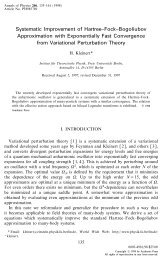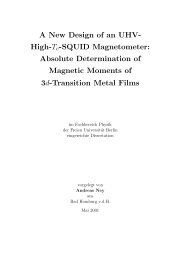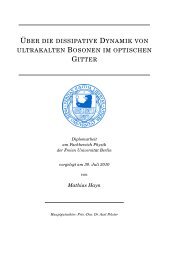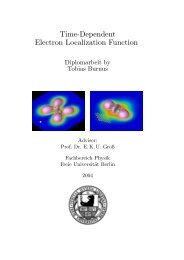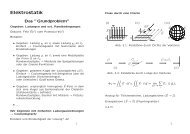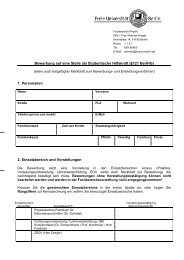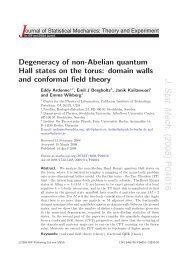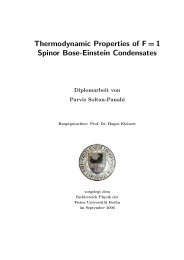Diploma thesis
Diploma thesis
Diploma thesis
Create successful ePaper yourself
Turn your PDF publications into a flip-book with our unique Google optimized e-Paper software.
2 Non-Hermitian dynamics<br />
The Hamilton operator does not depend on time so we can directly integrate (2.1) and obtain the<br />
separation<br />
Ψ(x, t) = exp<br />
(− i )<br />
tH ψ(x). (2.6)<br />
Let ψ(x) be an eigenstate of H to the eigenvalue E so we can write<br />
Now we can derive the time evolution of the density ρ(x, t):<br />
Ψ(x, t) = exp<br />
(− i )<br />
Et ψ(x). (2.7)<br />
[ ]<br />
2<br />
ρ(x, t) = exp<br />
E I(t − t 0 ) ρ(x, t 0 ), (2.8)<br />
where ρ(x, t 0 ) = ψ ∗ (x)ψ(x) is the density at a fixed time t = t 0 . One can see immediately that<br />
this non-stationarity is a direct consequence of the complexity of the potential since H is not Hermitian,<br />
which is followed by complex energy eigenvalues E = E R + iE I and so the time evolution<br />
operator exp ( − i tH) is not unitary any more.<br />
Inserting the separation (2.7) into (2.1) provides that ψ has to fulfill the time independent<br />
Schrödinger<br />
H(x)ψ(x) = Eψ(x), (2.9)<br />
which we will solve in the next two chapters for two different approximations of V (x).<br />
6




